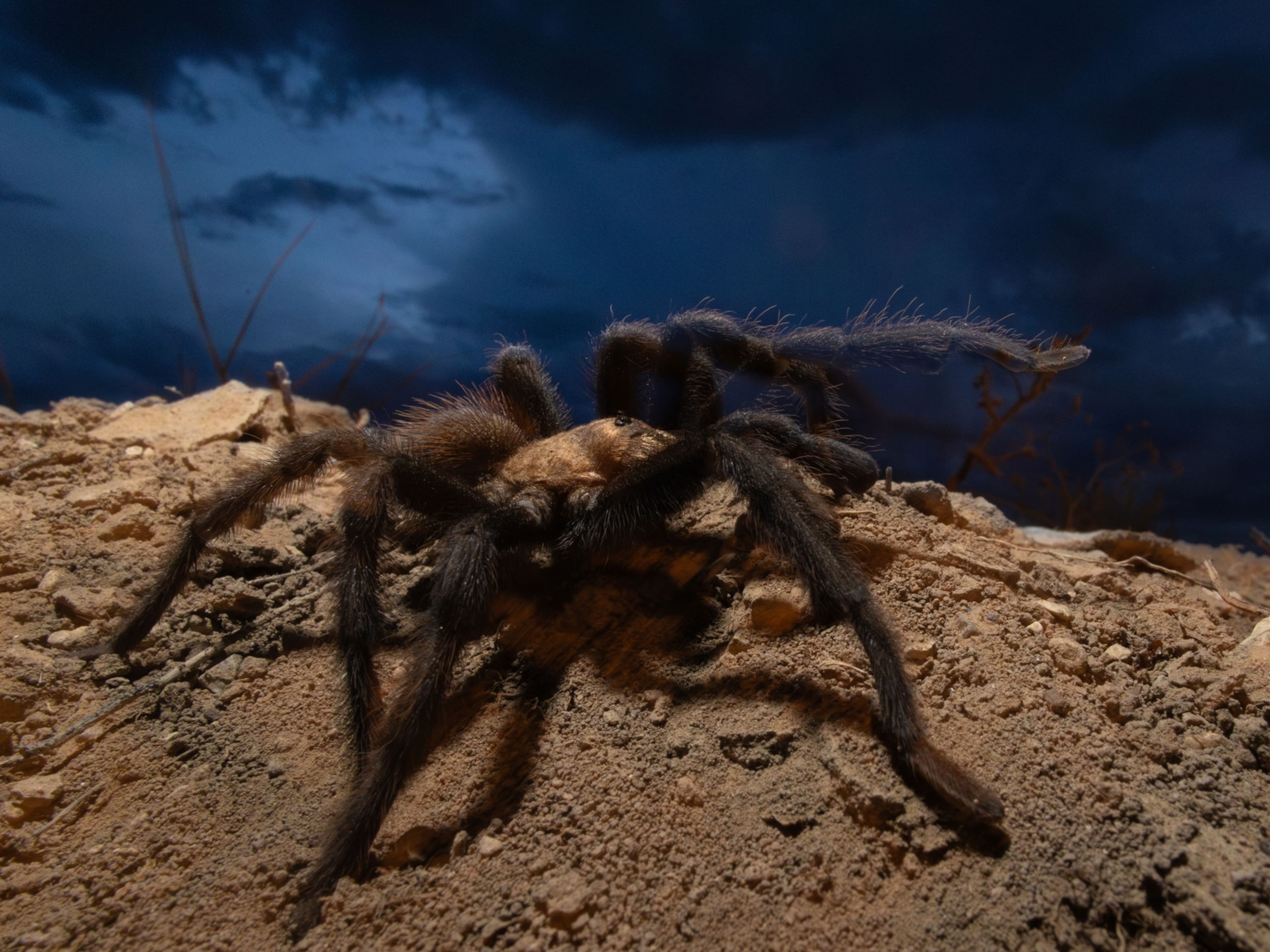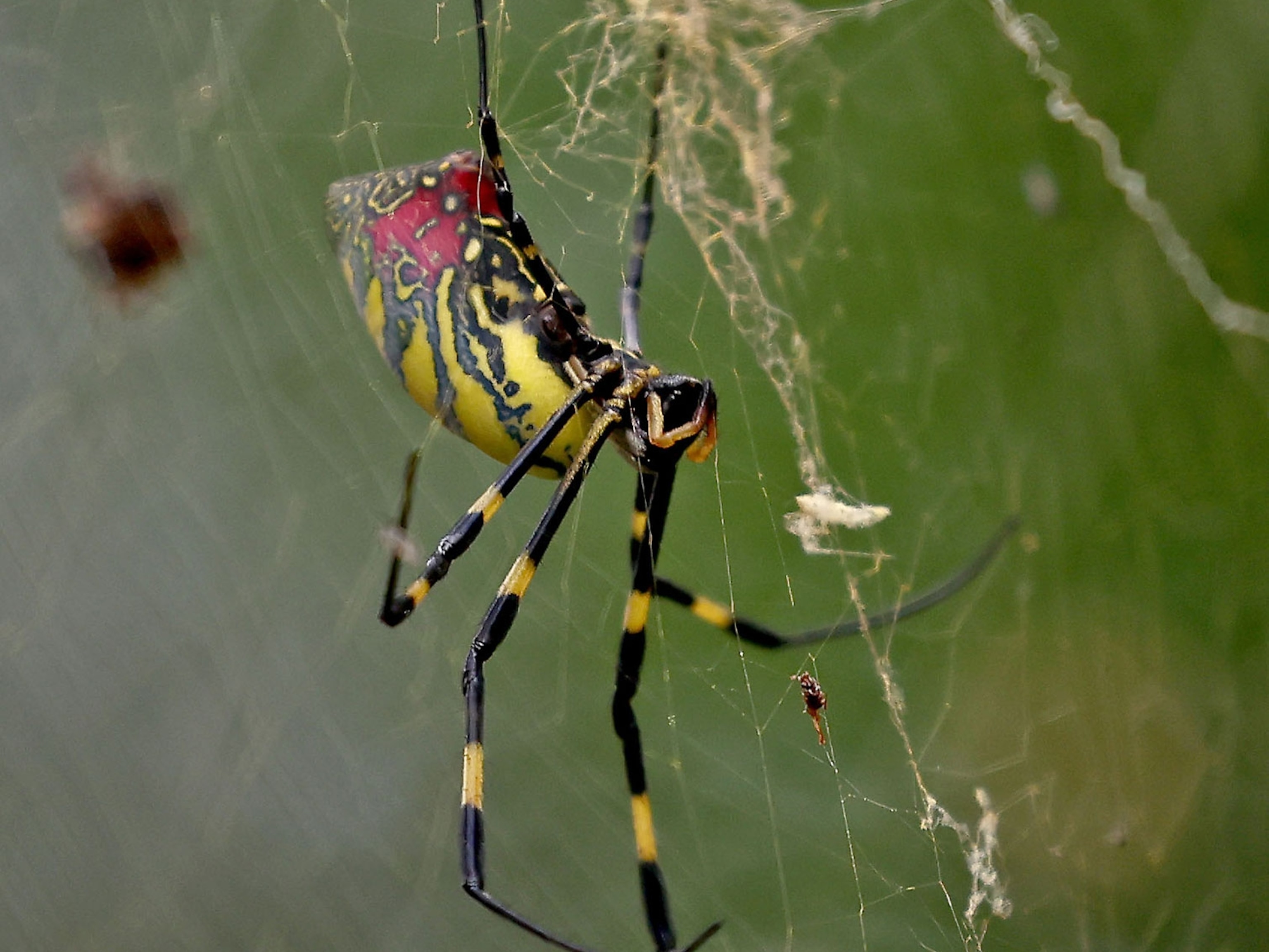
Male Spiders Give "Back Rubs" to Seduce Their Mates
Tactic helps orb-weaver avoid being eaten after sex, study says.
When a male golden orb-weaver spider Nephila pilipes wants to get busy, he pulls out a special trick: He gives his mate a "back rub," new research shows.
For many spiders, females of the species are much bigger than the males—N. pilipes females are up to ten times larger—so mating is always a risky proposition. An unlucky suitor might get interrupted in his carnal embrace when a female kicks him off and eats him.
(Related: "Largest Web-Spinning Spider Found.")
Male spiders have evolved multiple techniques to avoid this fate, at least before finishing the deed.
Male black widows, for instance, pick up scents from females that help the males determine how hungry their love interests are before attempting to mate. Redback spiders in Australia, meanwhile, actually allow themselves to be snacked on to prolong their time with a female.
N. pilipes's strategy involves another trait common among spiders: pedipalps, a pair of appendages that includes male genitals, said study co-author Matjaz Kuntner, of the Smithsonian's National Museum of Natural History and the Slovenian Academy of Sciences and Arts.
The male's pedipalps fit perfectly into the female's two genital openings, and he can leave them behind to "plug" the openings. But a male needs to mate several times in succession to plug both openings and guarantee the female—which can have multiple partners—will have his babies.
(Related: "'Castrated' Spiders Are Better Fighters, Study Says.")
To make his mate more receptive in between bouts, a male N. pilipes will spread silk over her dorsum, or back, in massage-like motions known as mate binding.
Watch video of N. pilipes spiders performing mate binding.
N. pilipes is the only orb-weaving spider known to perform mate binding, Kuntner said, although some spiders from other genera have been known to use the same tactic.
Touch-a, Touch-a, Touch Me?
Researchers had previously theorized that mate binding works because pheromones in the male's silk served to stimulate a female or simply to relax her.
So Kuntner and colleagues Daiqin Li and Shichang Zhang, from the National University of Singapore, blocked female N. pilipes' sense of touch by covering the spiders' backs with thin layers of superglue.
With a second group of spiders, the researchers removed the females' sense of "smell," to test whether they were picking up on chemical cues in the silk.
The team then let the males go at it.
All 17 females that couldn't "smell" calmed down after getting a massage. Females that couldn't "feel" were less likely to let their mates get it on more than once—about 40 percent weren't calmed, and many ate their mates.
Even males that had their spinnerets blocked could avoid being eaten with a well-timed but silkless back rub, the study team observed. (Related: "Spiders Evolved Spare Legs.")
The findings show that the silk itself is incidental—the female spiders are probably responding to simply being touched by their suitors.
Thus, the paper authors say, "mate binding ... could also be more descriptively termed 'mate massaging.'"
The research was published in the October 6 online edition of the journal Animal Behaviour.




